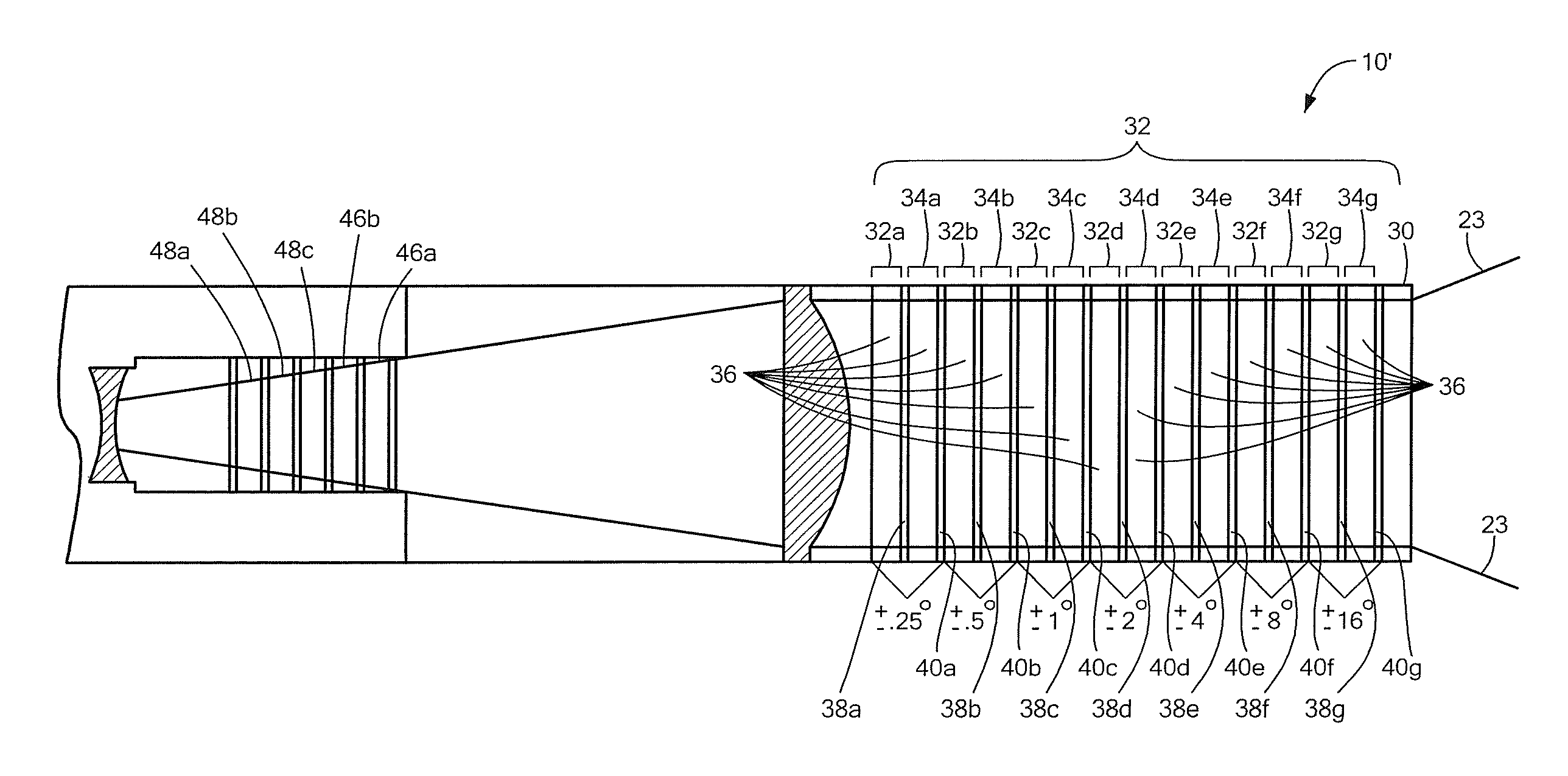High Fill-Factor Electronic Beam Steerer
a phased array and electronic technology, applied in the direction of optics, instruments, optical elements, etc., can solve the problems of inability to use dfcls, and inability to achieve dfcls in a usable form, so as to reduce the motion of the mode, reduce the mechanical motion, and be more robust
- Summary
- Abstract
- Description
- Claims
- Application Information
AI Technical Summary
Benefits of technology
Problems solved by technology
Method used
Image
Examples
Embodiment Construction
[0069]Described herein is the use of a fast-scanning optical phase array (FS OPA) within an electronic beam-steering-based aperture suitable for use in a system such as the Adaptive Photonically Phase-Locked Elements (APPLE) system, for example.
[0070]Also described is a stack of polarization gratings (PGs), each controlled by a liquid-crystal wave plate which may be used in the APPLE system.
[0071]Before describing a fast-scanning optical phase array and a polarization grating architecture, some terminology is defined. As used herein, the term “aperture module” or more simply “aperture” to an optical train having one or more OPA devices, a polarization grating (PG) stack having at least some interleaved PG elements, an adaptive optics (AO) portion, coarse OPAs and one or more half wave plates. One exemplary aperture is a modified APPLE architecture referred to as an “APPLEt.” The terms “composite aperture,”“optical phased-array” or more simply “array” refer to a plurality of aperture...
PUM
| Property | Measurement | Unit |
|---|---|---|
| diameter | aaaaa | aaaaa |
| blocking time | aaaaa | aaaaa |
| reset time | aaaaa | aaaaa |
Abstract
Description
Claims
Application Information
 Login to View More
Login to View More - R&D
- Intellectual Property
- Life Sciences
- Materials
- Tech Scout
- Unparalleled Data Quality
- Higher Quality Content
- 60% Fewer Hallucinations
Browse by: Latest US Patents, China's latest patents, Technical Efficacy Thesaurus, Application Domain, Technology Topic, Popular Technical Reports.
© 2025 PatSnap. All rights reserved.Legal|Privacy policy|Modern Slavery Act Transparency Statement|Sitemap|About US| Contact US: help@patsnap.com



